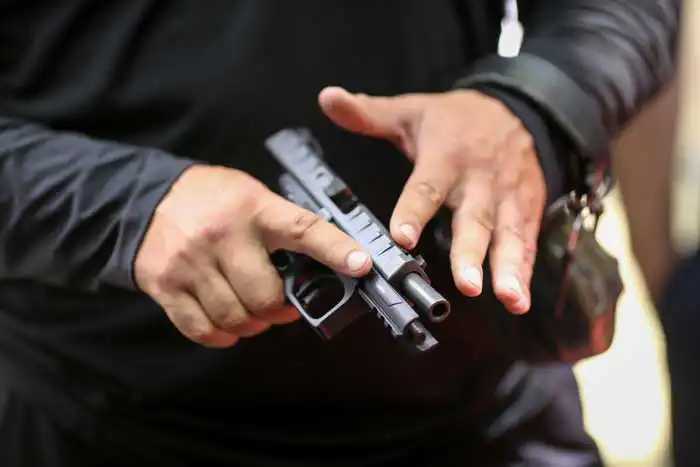As an instructor and firearm enthusiast, I am constantly at the range with students, friends or just by myself. I am provided with many opportunities to witness people’s firearm handling abilities (or lack thereof) and then provide suggestions about what classes would be beneficial for them and what they need to work on in order to improve their shooting. Specific to shooting pistols, there is one common theme amongst males that have not had any formal training/instruction; they believe they know the basics, are proficient, and do not need instruction on the basics of how to shoot and handle a handgun. Based on having witnessed these individuals shoot a handgun, this could not be farther from the truth.
Why do they think no formal instruction is needed for handgun basics you ask. There are three extremely common and consistent answers:
- I was in the military
- I grew up shooting guns
- My father/grandpa/friend taught me how to shoot
If you are reading this article, have not had any formal instruction for handgun shooting, and are in the above group of people, please keep reading! I promise this is going somewhere.
The above 3 groups account for the majority of shooters. The reality is that none of these instances above (with the exception of certain military units) give adequate, proper training for being able to effectively and proficiently shoot a handgun. Most of the time, when I see these people shoot a pistol, they aren’t using a proper grip, their trigger pull is wrong and in general, they need a formal class to learn how to shoot properly. Yet they won’t take one because they do not think it is needed. You may feel confident when shooting at the range, but what isn’t truly grasped is how beneficial taking a class on the basics can be.
The Need for Self-Assessment
Self-assessment is a crucial element in the journey of improving your shooting skills and overall firearm handling. Without an honest evaluation of your current abilities, it’s easy to fall into the trap of overestimating your proficiency, particularly if you’ve had prior experience or exposure to firearms, such as described above. Engaging in self-assessment allows you to identify specific areas where you may need additional training or refinement, even if you believe you have the fundamentals mastered. Consider how your performance aligns with established shooting standards and be open to seeking constructive feedback from qualified instructors. There are countless handgun shooting drills that can be found online. Ones that can even be done at many indoor shooting ranges. Use these drills to evaluate your abilities.
Trainer and SWAT instructor Paul Ford has observed, based on his own experiences and analyzing incidents involving others in gun fights, that you will do about 70% of your worst day at the range during a self-defense shooting incident. That is a staggering number to really think about. Take your worst day at the range, which would be under perfect conditions as well, make it much worse, and that’s how you will do in a self-defense encounter using your firearm. For individuals that have only met the state mandated training for something such as the Texas License to Carry (insert your states license here), this would be unacceptable.
In many cases, these individuals have developed ingrained habits that can hinder their performance and shooting. It’s crucial to recognize that a solid foundation in the basics is essential for all shooters, regardless of perceived experience level. That’s also why we advocate for a cyclical approach to training, where revisiting foundational skills can lead to significant improvements.
The Data
According to data gathered by Karl Rehn of KR Training and written about in his book “Strategies and Standards for Defensive Handgun Training”, 99% of firearm owners do not train past the state minimum levels. This is unfortunate. Just because you have met the state minimum, does not mean that you are a competent shooter and can proficiently, effectively and safely handle your firearm. Everyone should strive for as must training as possible, but even 1-2 classes with a professional firearms instructor can put you at a level of competency that otherwise wouldn’t be reachable.
Conclusion
The entire point of this article is to say this, if you had not had any formal training from a reputable firearms instructor, go get some. You may think you are decent because you grew up shooting, but trust me, you need the training. Online courses, such as our Handgun Essentials and Mastering Concealed Carry online classes, are great ways to begin your journey of personal development. The techniques and information taught in those courses is considered industry standard. This means they will provide you with a solid foundation that will be built upon with further in-person training. If you are in the Austin Texas area, you can train with us through LTC Austin.



